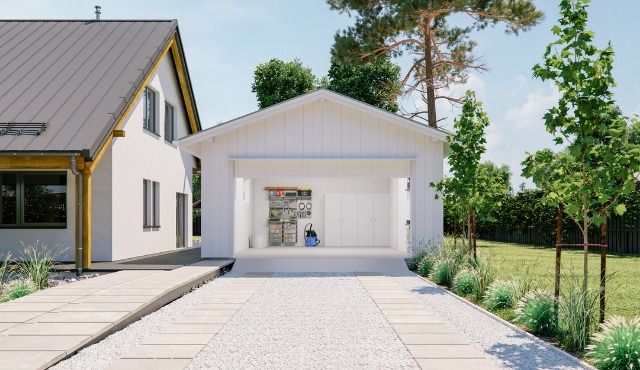By Rachelle Wilber
Adding a separate garage to your home can be a fun and exciting project but it demands meticulous planning and consideration. It's not just about creating additional space; it's about enhancing your home's value, utility, and aesthetic appeal. This article delves into the five crucial aspects every homeowner needs to understand before undertaking such a venture - from the importance of building permits to the finishing touches that breathes life into the structure. With these insights, you will be better equipped to ensure your new garage is not only a practical addition but one that seamlessly blends with and complements your existing property.
Obtaining Building Permits
When it comes to constructing a new garage, acquiring a building permit is a legal requirement. This seemingly trivial piece of paper serves as a passport to a safer and more streamlined construction process. It ensures that your garage will adhere to local zoning laws, building codes, and regulations. Obtaining a permit might seem like a tiresome bureaucratic step, but in reality, it's a safety net that protects you from future legal headaches and ensures your garage will be a sturdy and safe addition to your home.
Landscaping and Excavation Essentials
Landscaping and excavation are fundamental components of any construction project, and your new garage is no exception. Before you can lay the foundation or start building, you need to ensure the land is properly prepared. This begins with excavating any unnecessary soil, leveling the ground, and then compacting the soil to provide a solid base. Moreover, landscaping is not just about aesthetics, it is also about ensuring proper drainage to prevent water from pooling around your new garage and causing potential damage. So, hiring a professional landscaper, like Weber Lawn & Landscape, can be an excellent investment to ensure the functionality of your new garage, and the overall appeal of your property.
Choosing the Right Materials
Selecting the right materials for your garage construction is pivotal, not only for the appearance but also for the longevity of your structure. The materials you choose should be able to withstand the local climate and should require low maintenance. Some popular options for garage construction include steel, wood, and brick. Steel garages are durable, cost-effective, and require little maintenance, making them a popular choice for many homeowners. Wood, while it may require more upkeep, offers a classic and warm aesthetic that many homeowners love. Brick is another durable and low-maintenance option and can be matched to existing brickwork on your home for a seamless look. Your choice of materials will ultimately depend on your budget, maintenance capabilities, and personal preference.
Powering Your Garage
Upgrading circuit breakers and electrical systems is an often overlooked but crucial aspect of building a new garage. Most older homes are equipped with a 100-amp service, but modern garages housing items like electric car chargers, power tools, and refrigerators may require a 200-amp service. A professional electrician can do an audit of your home's electrical needs and suggest the appropriate upgrades. Neglecting this step could lead to overloading your home's electrical system, causing circuit breakers to trip or potentially leading to a fire. Investing in a robust electrical system will not only power your garage efficiently but also enhance the overall safety of your home.
Finishing Touches
The finishing touches on your garage can make a significant difference in its functionality and appeal. Effective lighting is a must for any garage, and you should consider a mix of general, task, and accent lighting to ensure the space is well-lit for various purposes. Insulation is another key aspect; a well-insulated garage can keep the temperature regulated, making it comfortable to work in during all seasons. Additionally, the garage door you choose can greatly impact the look and functionality of your garage. Options range from classic wooden doors to modern, insulated steel doors, and each has its own benefits and drawbacks. Lastly, don't forget to think about adding some storage solutions and a fresh coat of paint to make your garage not just utilitarian, but a space you enjoy being in.
In conclusion, adding a garage to your property is a significant undertaking that requires careful planning and consideration. From acquiring a building permit to choosing the right construction materials and final touches, every step plays a pivotal role in ensuring the functionality, safety, and aesthetic appeal of your new garage. Remember to not overlook the importance of a robust electrical system and well-thought-out landscaping and excavation. While the process might seem daunting, taking the time to carefully plan each aspect and seeking professional help where needed will ultimately result in a garage that enhances the value of your home and serves your needs for years to come.
Rachelle Wilber is a freelance writer living in the San Diego, California area. She graduated from San Diego State University with her Bachelor's Degree in Journalism and Media Studies. She tries to find an interest in all topics and themes, which prompts her writing. When she isn't on her porch writing in the sun, you can find her shopping, at the beach, or at the gym. Follow her on twitter: @RachelleWilber








